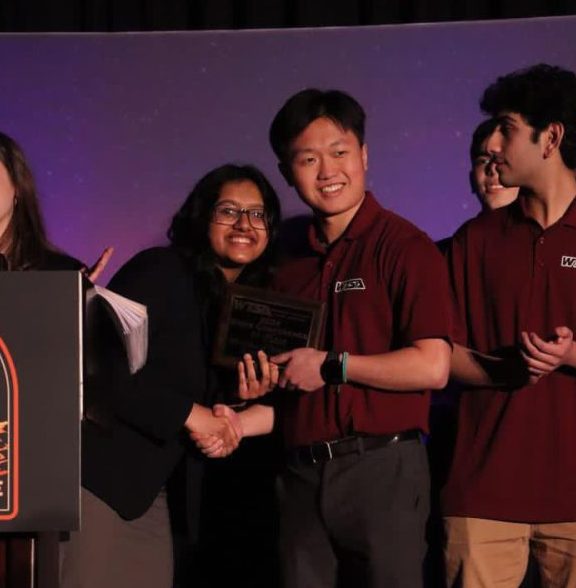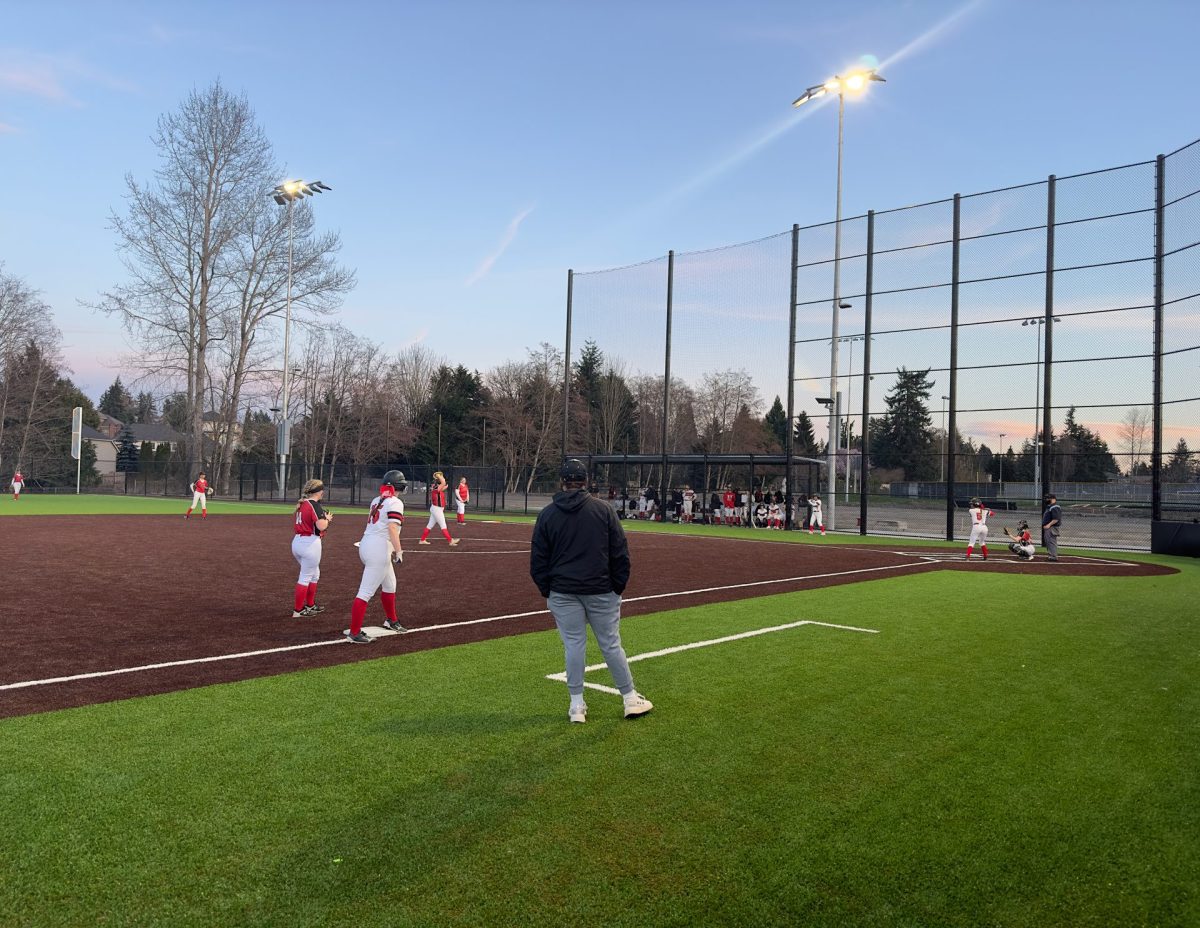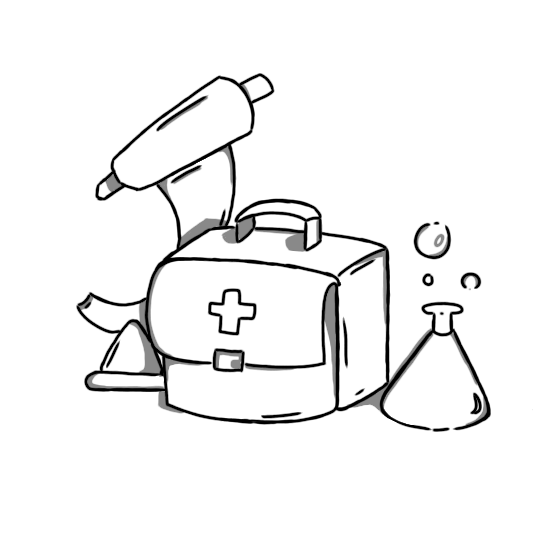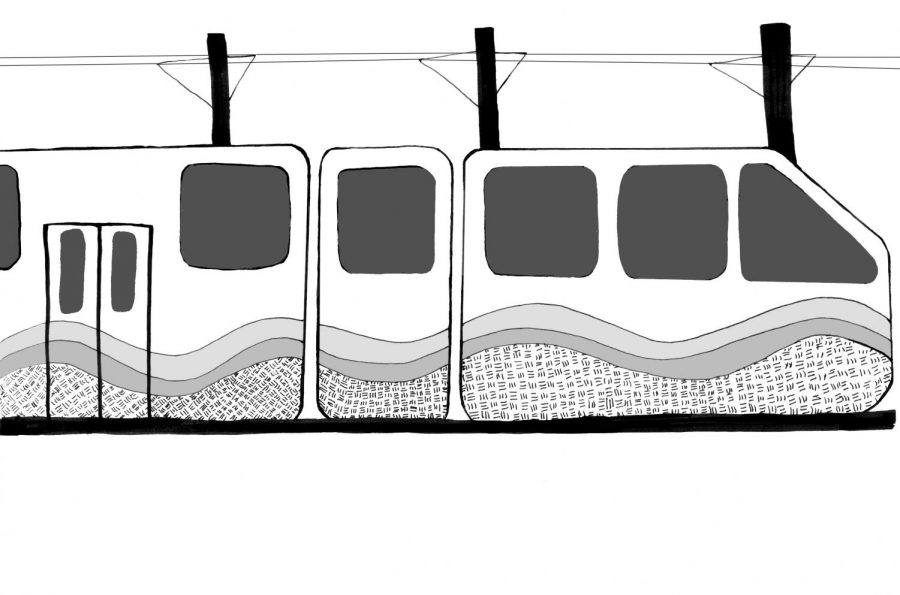The Edmonds School District (ESD) added Monday and Tuesday in place of Friday to the original activity bus schedule and has the bus departing from MTHS at 4:30 p.m., instead of at 4 p.m. MTHS has also extended “Study Hawks,” a time for students to visit the library after school to seek help with classes or to just study, from 3:30 p.m. to 4 p.m. in order to accommodate for this extended time, according to principal Greg Schwab.
Student after student piles onto the yellow Edmonds School District (ESD) bus, heaving sighs of relief as they drop into their seats, knowing they now have a guaranteed ride home – at least for today.
The MTHS activities bus, designated for students who are involved with sports or other after school clubs, is scheduled for Wednesdays and Fridays at 4 p.m. Last year, however, the bus ran every day at 3:30 p.m
Clearly, this is an inconvenience to students who stay after school on days that the bus does not run, according to Principal Greg Schwab. He said students are then forced to find an alternative way home, most resorting to walking.
Schwab also said he has been trying to contact the district, hoping to be able to find a solution for students who need the activity bus every day after school.
The activities bus is not available every day due to district-wide changes in bus scheduling. Lynndale Elementary students have been moved to the old Woodway Elementary School due to renovation. The school has changed their school hours from 8 a.m. through 2 p.m. to 8:40 a.m. through 3:10 p.m.
Because of this, there are fewer bus drivers available at 4 p.m. so there are less “runs” during that time.
ESD Transportation Director Craig Christensen said once Lynndale Elementary is finished with its renovation process, the school hours will go back to normal and, hopefully, more buses will be available during the time the activity bus runs.
Office of the Superintendent of Public Instruction (OSPI) Regional Transportation representative Anna Esquibel said other districts have what are called “skeleton runs,” or bus drivers that would normally take student athletes home from practice or to games also take the students who take the activity bus home. However, since practices end later than other school clubs and games begin later, this would have students boarding the bus at about 6 p.m. and, since the route is longer and has to “hit” every stop, arriving home at approximately 8-9 p.m.
Junior Tanner Rook said he takes the activity bus every Wednesday and Friday after school. He said when the bus is not available, he asks either a friend or his step-father for a ride home.
If the bus were to be made available every day, Rook said he would take advantage of that and ride it home.
“[Having the activity bus available every day] would help me and, at the same time, it would help a lot of other people,” Rook said.
He continued, saying that he oftentimes sees students asking teachers or administrators if the bus is available for that day and, upon being told it is not, they usually groan or sigh.
Christensen said the ESD is currently working to hire new bus drivers.
However, due to the new Washington state-mandated union, school district employees must work at least five hours.
Christensen said he isn’t entirely sure of what the district would have the drivers do for the other four hours when activity buses aren’t needed. He also said that hiring new drivers may not entirely solve the problem.
Hiring more bus drivers and finding new buses is what Esquibel calls a “local decision.” She said that, since student transportation is not state funded, the amount of money put toward it is decided upon by each individual school district.
OSPI Director of Student Transportation Allan Jones said most drivers will work around the different schools as playground helpers and lunchroom staff, among other things. However, that is typically designated at the beginning of the year.
Jones also said there is a general decrease in the number of bus drivers hired.
“Every [school district] is short bus drivers,” he stated.
Jones went on to explain that this is most likely due to the fact that there is very little funding for the transportation system.
Esquibel said not having enough bus drivers available is a national problem and it’s not surprising to her at all that ESD has a problem finding new drivers.
“If there are no drivers, there are no buses and students have no way home,” Esquibel said.
Jones said if “the rules change” and the state supplies more funding, there will be more bus drivers hired.
“It’s not finding bus drivers, it’s that there is little to no funding,” Jones said.
Being a bus driver is a part-time job, so it’s not considered a high paying job. There’s also a one month to six week required training to be a drivers, according to Jones. According to the OSPI website the employees are not paid during the training period. The job is also seasonal, as bus drivers do not work during the summer, so there is no income during those three months.
“I personally liked not working in the summer. I’d still like to have my summers off,” Jones said with a laugh, referring to his past as a bus driver for 14 years in Seattle.
Jones said that, sadly, when the unemployment rate is low, it can be difficult to find drivers. On the other hand, when the unemployment rate is high and people are being laid off from their jobs, it’s easier to find drivers.
He said that this was because when other options are available for those who need a job, not many people will choose to be a school bus driver.
Jones said that, oftentimes when he tells people he used to drive a school bus, they reply with “I could never do that.” He went on, saying that people tend to be against the idea of driving a large school bus full of “screaming kids.”
There are various requirements to be a bus driver, Jones said, one of which being that the driver must be prepared to handle a vehicle filled with young students.
However, the driver must not only handle themselves during their work hours, but they’re also responsible for the students’ safety along with making sure the students aren’t misbehaving.
“Bus drivers shall have the responsibility and authority to maintain discipline on the school buses and to recommend to the appropriate building principal when necessary, that disciplinary action may be taken,” the ESD website states under “student behavior goals and expectations.”
Along with that, the driver must know how to drive a large vehicle well, must have had their license for five or more years and must have a clean record with no DUIs and little to no tickets.
According to Jones, a lot of people are disqualified from the hiring process due to mistakes made in their past. He said these requirements “add to the challenge in finding new drivers.”
The OSPI website provides various links to a number of training programs and classes for potential school bus drivers, along with the 2014 School Bus Driver Handbook.
There’s also information about the Student Transportation Allocation Reporting System (STARS), a program designed to provide adequate funding to all school districts statewide for the operation of their student transportation programs. The system uses a regression analysis using individual school district characteristics to determine an expected cost of operations for student transportation.
According to the STARS “quarterly reports,” approximately 740 thousand students in Washington state depend on the school bus as a ride either to or from school.
The OSPI website also has a link to The National Association of State Directors of Pupil Transportation Services (NASDPTS), an association that wants to provide “leadership, assistance and motivation to the nation’s school transportation community with the goal of providing safe, secure, efficient, economical, and high-quality transportation to school children on their trips to and from school and school-related activities,” according to their website.
This organization’s goal is all students to have a safe and cost-effective transportation service to and from school. The NASDPTS believes students across the U.S. should have the same opportunities for a school bus or a otherwise, their website states.
During an Edmonds School District (ESD) board meeting held on October 27, the board discussed alternatives to the regular yellow school bus.
The board agreed that the problem lies in the fact that there is a lack of drivers available.
Director of District Four April Nowak brought up the idea of distributing bus passes to students for the community transit.
Anna Esquibel said she advises the School Board to further consider that idea, since it has worked before in the past and that it may be an easy solution.
However, Superintendent Nick Brossoit said that idea was used 12 years ago, but the cost went up significantly since then and it is actually “cheaper to just use the yellow school bus route.”
Nowak responded that she believes a lot has changed in the last 12 years and that the board should reconsider the idea.
Scriber Lake High School (SLHS) Student Advisor to the School Board Alicia Verzola said SLHS gives bus passes to every student. She said this gives student a sense of independence and helps them attend school “not because they have to, but because they want to,” Verzola said.
Brossoit mentioned that students in the past have sold bus passes given to them by the school district. To solve that issue, MTHS Student Advisor to the School Board Dee Strohl suggested taking one from Edmonds Community College’s book and making it so that students’ identification cards can also be used as bus passes.
President Diana White said she will have the ESD School Board look into having bus passes provided to certain students who need it. She said she liked the idea of student identification cards doubling as a bus passes and will discuss it further with Secondary Assistant Superintendent Patrick Murphy.
There will be more information on the idea of either distributing public bus vouchers to students or hiring new drivers along with buying more buses at the next ESD School Board meeting.














